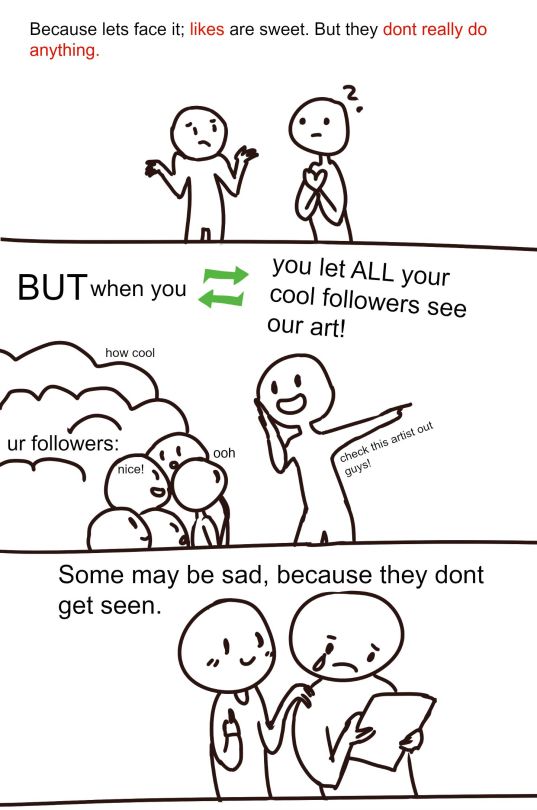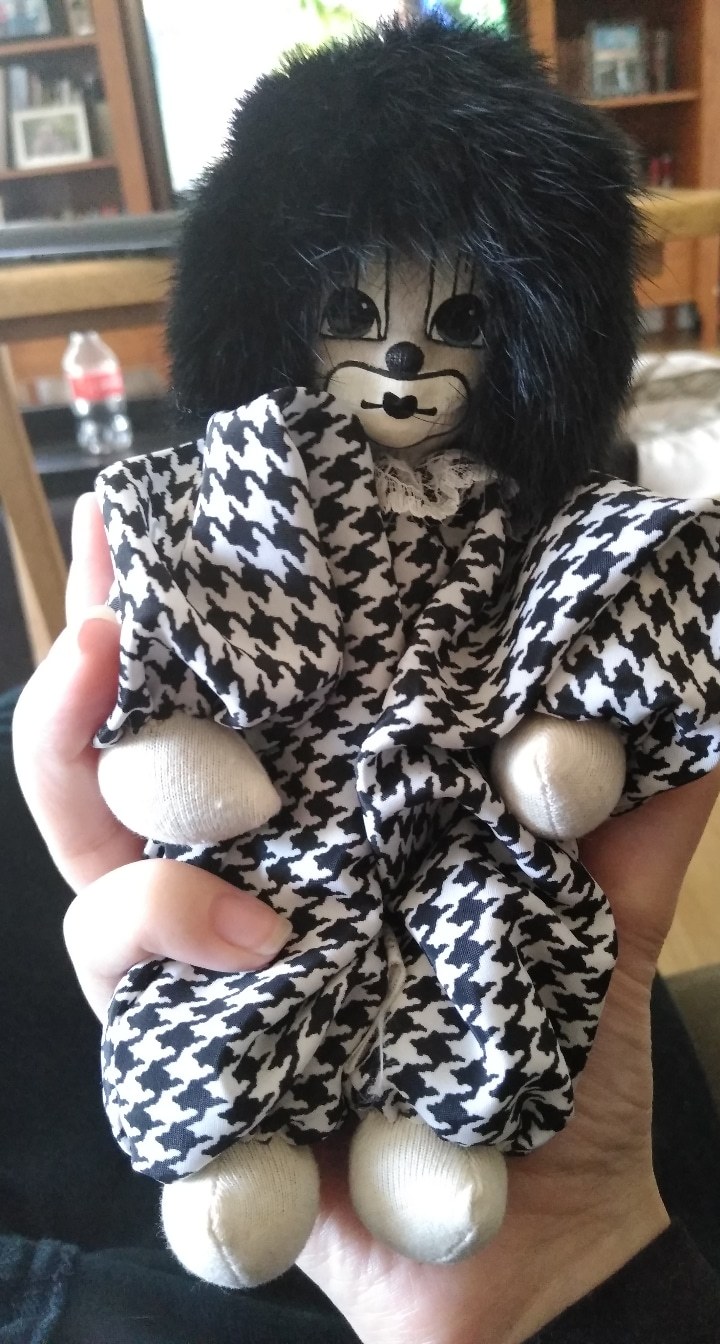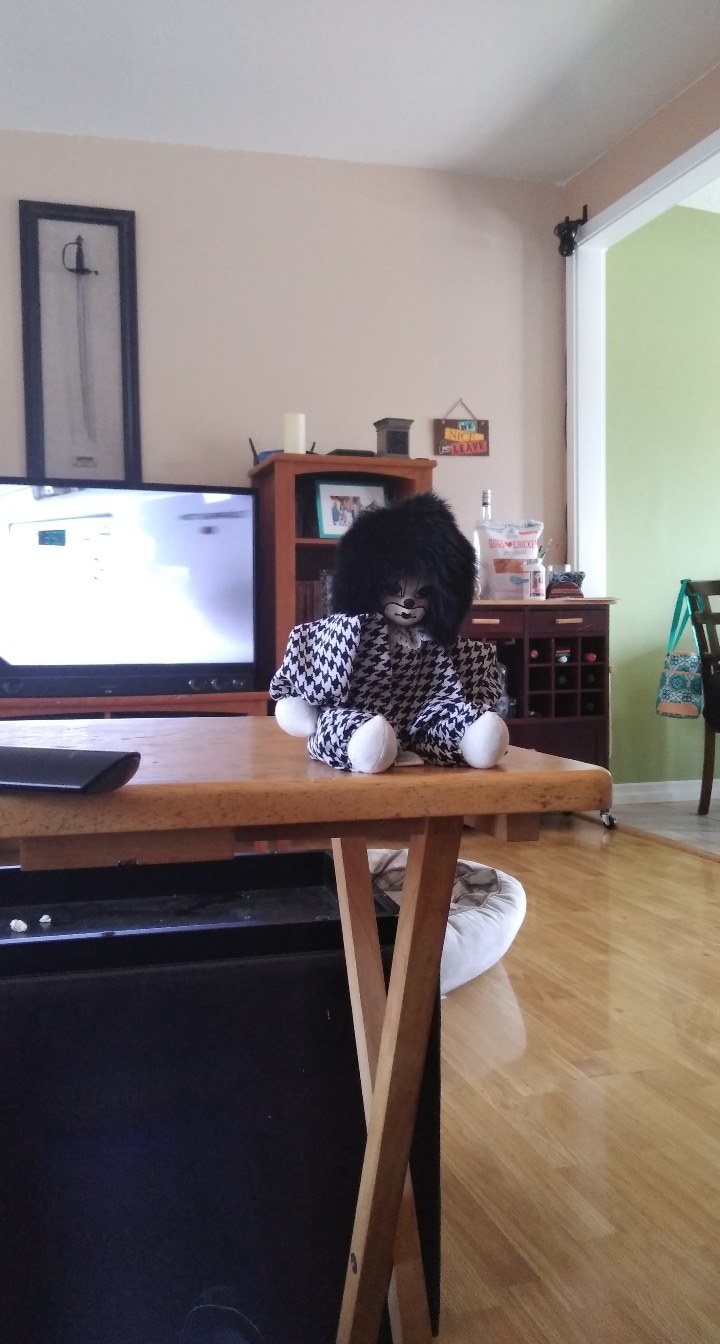Photo
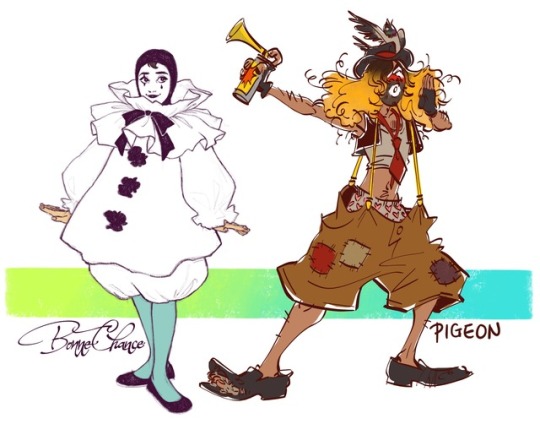
My two domesticated clowns, Bonne-Chance and Pigeon. They’re a domestic bonded pair!
Bonne-Chance: Male Whiteface, Purebred French Pierrot. He’s not exactly show-quality because of the off-coloring stockings, but he’s still classically trained in pantomime and very healthy, with lovely markings and a pleasingly complex personality. Make sure to properly research geneology with purebred clowns. I sourced Bonne-Chance responsibly. Pierrots are usually very well-behaved, and Bonne-Chance is a particularly sweet one that doesn’t lose himself in the stereotypical bouts of Pierrot melancholy.
Pigeon: Male mutt, mixed wildtype European Tramp and American Landrace Circus/Rodeo Auguste cross. Messy markings, but he’s talented at stunts, mimicry, tricks and pranks, and a very skilled buffoon. And he was a rescue! He adapted well with no behavioral issues, very endearing and sweet- anyone who says adopted shelter clowns can’t adjust to a home life is wrong. Pigeon tends towards very upbeat play and keeps from being too rowdy, but sometimes shows some distinct Sad Clown display, which is normal and healthy as long as it isn’t too excessive.
3K notes
·
View notes
Photo
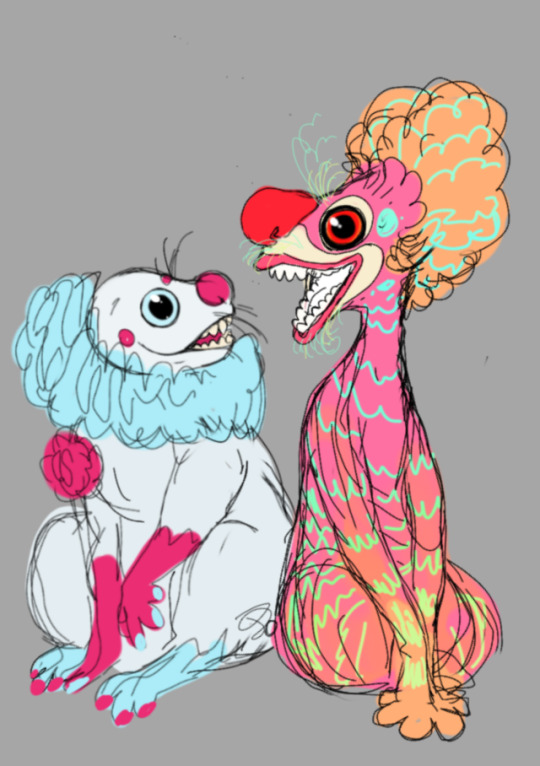
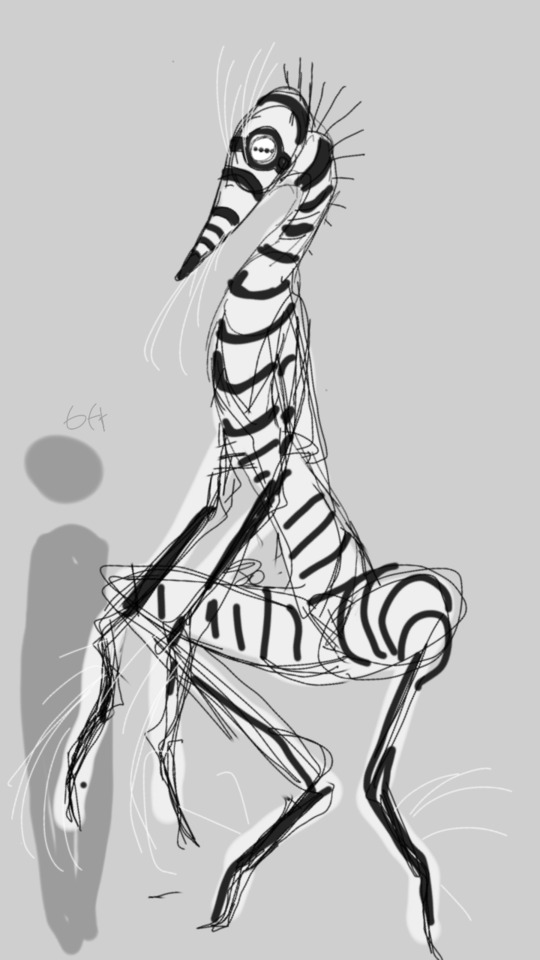

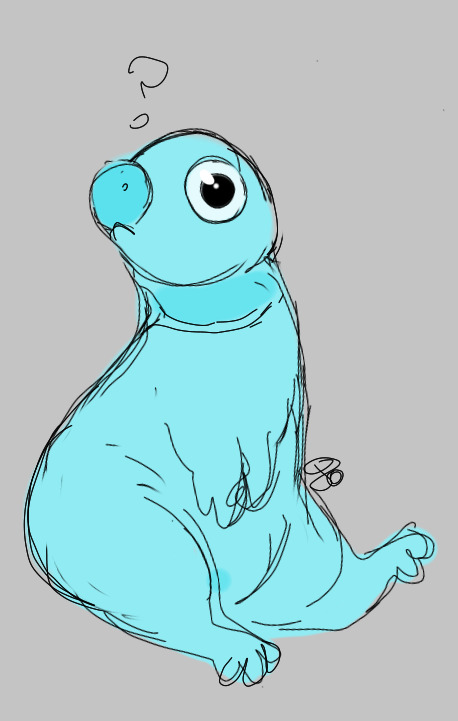
Yesterday i began thinking about the Clowns as Pets meme and…..
4K notes
·
View notes
Text
Beginner Clown owners PLEASE read this!!
I’ve seen a lot of Clown Husbandry posts recently, which is really wonderful for the clown-owner community. However! These posts will bring in a huge influx of new clown owners, and I thought I should go through some of the worst beginner clown breeds. Do not buy or adopt these clown breeds unless you’re an experienced clown owner.
1. Hampshire Heavy Stripe
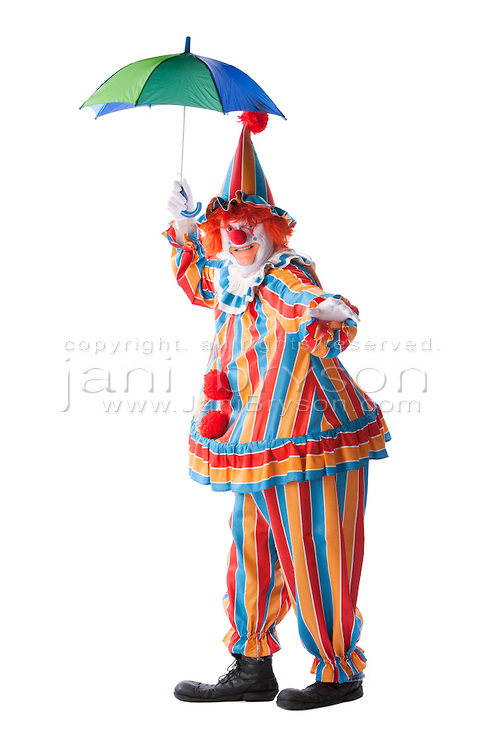
Hampshire Heavy Stripes put on weight incredibly quickly for any type of clown breed. They grow to be quite large, which may be good for meat clowns, but not for pet clowns.
These clowns need an incredible amount of space (at minimum 50 square ft sized tents). I’ve seen reports of Hampshire Heavy Stripe Owners who can only fit around 3 other domestic clowns in a clown car with their Heavy Stripe. And on top of all those spacial needs, Hampshire Heavy Stripes end up needing over 100$ of freshly whipped cotton candy and peanuts a week.
Most breeds of Hampshire Heavy Stripes have an umbrella attached to them, almost as an extra appendage of sorts. While this umbrella is good for show, it is incredibly dangerous and can spray toxic material. These creatures are anything but docile, and will attack when provoked, usually using their umbrella as a weapon.
Like any breed of clown, if treated right, they can be wonderful pets - but since these clowns are bred to be so aggressive, I would NEVER recommenced them to a beginner pet owner.
2. Red Polka Boxer
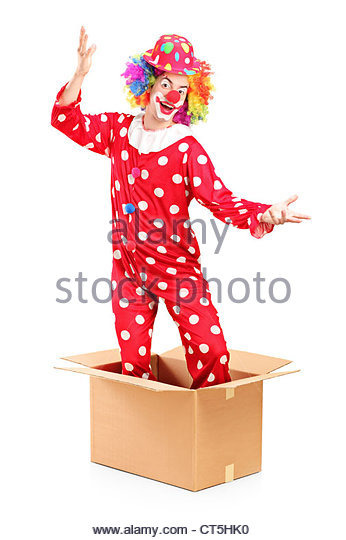
These clowns look like they make for incredibly fun pets, and are great appearance wise. However, there is a large amount of problems many beginner (and even intermediate) clown owners do NOT take into account.
Red Polka Boxers are known for their ability to fit in to incredibly small boxes and jump out at any time. But, they will often cram themselves into small spaces under stress - spaces so small that they are impossible to be retrieved from.
These clowns will become extremely stressed when not given a MINIMUM of 130 different boxes to fit inside and play with. For many clown owners, this can end up costing in the thousands. Red Polka Boxers also need a variety of different clown cars to play in.
Usually somewhat antisocial, these clowns prefer to be alone - in small, confined spaces. However, this is no excuse for an inadequate circus tent. These clowns still need 30 square feet of circus tent to play around in when they see fit.
While these clowns are usually an incredibly healthy and kind breed, the risks in taking care of them are often too high. Red Polka Boxers are only for experienced clown owners.
I will add on to this post, for the right clown for you is very important.
4K notes
·
View notes
Photo
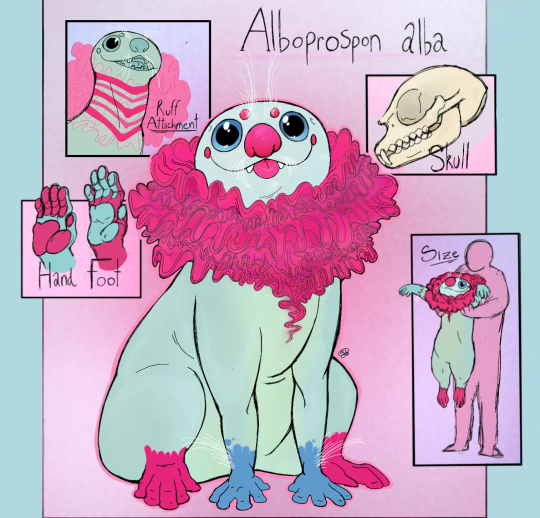
Also called the common or white clown, the whiteface clown is a popular species of domestic clown. They’re more relaxed in temperament than the average red clown, but tend to be less suited for young children and thus have fewer breeds.
I can’t believe i forgot to post this pet clown reference…
7K notes
·
View notes
Photo
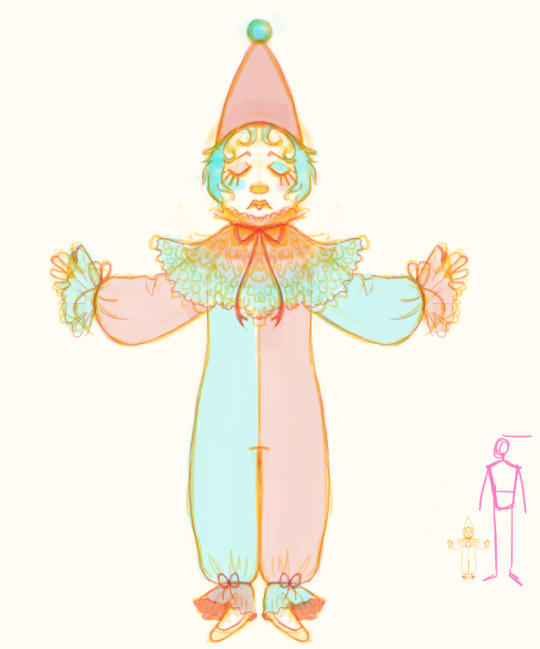
another clown!
bicolor “princess” (miniature) porcelain clown - ‘princess’ or miniature porcelains are also known as babydoll clowns because of their affectionate and delicate natures. rather than being a line-bred mutation, this size occurs naturally in the wild, and stay no larger than a human toddler at their biggest size. like most porcelain breeds, they have extremely particular diets and require constant companionship, either in a small troop of 1-5 other porcelains (any breed), or with their owners; they should not be cohabited with other clown species, and are not suitable for young children, due to their fragility. they are an excellent display or comfort clown for quiet households with an advanced keeper familiar with porcelain behaviors. the ‘bicolor’ mutation usually displays two contrasting solid colors, but some display a reduced polka-dot or stripe pattern on one or both sides.
715 notes
·
View notes
Text
PSA ON SADCLOWNS!
1. A common misconception is that sad clown breeds come from a different breed being put into harsh environments. This is not true! Do not put your clown in harsh environments before breeding in hopes of getting a sad clown.
Rather, all sad clowns come from a common ancestor, the Pierrot Dellarte!
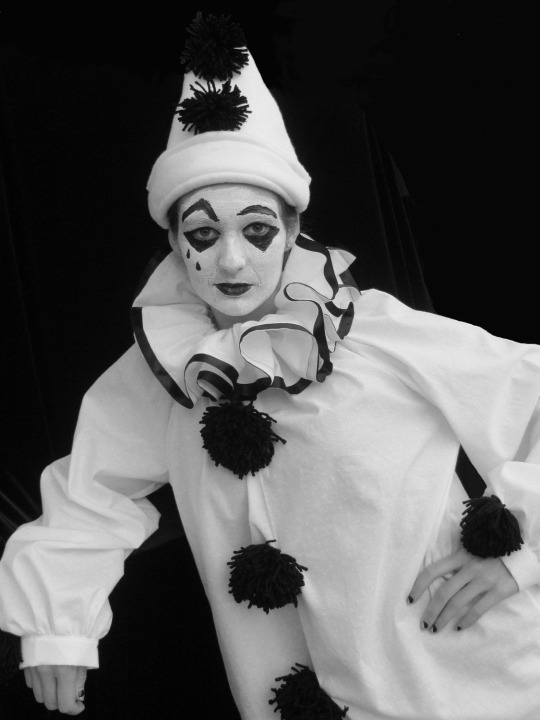
This is a prime example of a healthy Pierrot! Pierrot also happens to be the common ancestor for most mimes.
So, if you want a sadclown variety, your best bet is to breed your current clown with a mime or another sadclown.
2. It’s okay for your sadclown to have color! Many modern sadclowns have color nowadays due to the prevalencey of red clowns and the evergrowing popularity of rainbow clowns. If they start fading, however, do not hesitate to take them to a doctor.
3. Give your sadclown variety! Many sadclowns don’t take joy in the more rigorous clown activities. Instead, give them something creative to do.
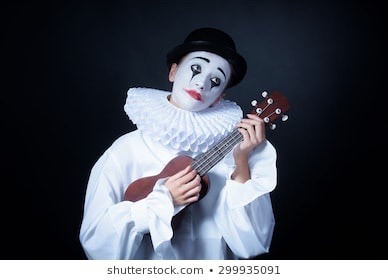
Music is a common interest among sadclowns.
Have a good day!!!
1K notes
·
View notes
Text
Hey clownblr this is my first post to this blog and I wanted to know what kind of clown I found. I'm rather new to the clown scene but I think they might be some kind of mime mix because they don't talk at all or make any noises. I found them behind an old building so I think it might have been abandoned. They're super energetic and hyper and not aggressive but the complete opposite, they're very friendly but a bit mischievous. They're hair is bright red and straight, about down to they're chin and they have bright pink markings on the cheeks and nose and bright red lips, black markings on the eyes that looks like winged eyeliner and under the eyes that looks like a triangle with a dot on the end. Could you help me figure out what kind of clown they are and how to care for them? Also in height they're about 5'3
22 notes
·
View notes

